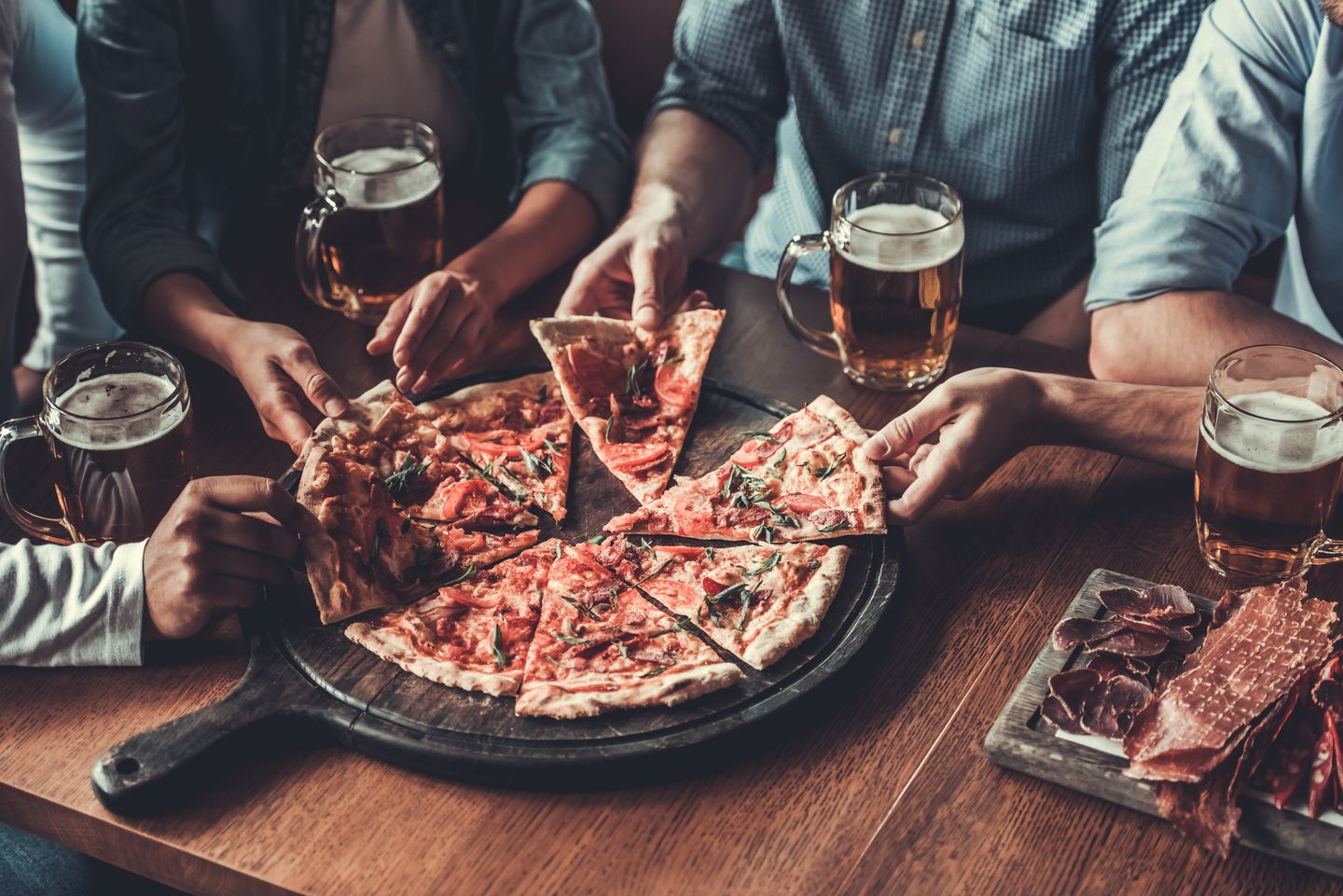
Americans get most of their daily calories from ultra-processed junk food such as pizza and sweets, according to a first-of-its-kind federal report reflecting new health priorities under the Trump administration.
The Centers for Disease Control and Prevention’s analysis of public health surveys found that burgers, pizza, sandwiches, salty snacks, sweet baked goods and sugary drinks led the way, as unhealthy food accounted for 55% of the average person’s daily caloric intake between August 2021 and August 2023.
That included 61.9% of youths up to 18 years old and 53% of adults 19 and older, the CDC’s National Center for Health Statistics reported Thursday.
“This report is the first time that CDC/NCHS has reported on ultra-processed food consumption,” Paul Prince, a CDC spokesman, said in an email. “[It] indicates that youth and adults have consumed a majority of their calories from ultra-processed food over the past decade.”
Nevertheless, he noted “a slight decrease” in ultra-processed food consumption from minors surveyed from 2017-18 to the most recent data period covered in the report.
A similar decline occurred among adults 19 and older beginning in 2013, the earliest year of available data.
Ultra-processed food is industrially produced food that includes additives, preservatives, and artificial flavors. Food companies have increasingly relied on them since the early 2000s to mass-produce foodstuffs with longer shelf lives and lower prices.
At the same time, a growing body of medical research has linked the addictive quality and low nutritional value of such sustenance to growing instances of obesity, diabetes and food allergies in children.
“Most dietary guidelines, including the Dietary Guidelines for Americans, 2020–2025, recommend eating a variety of whole foods and limiting intake of foods with added sugars,” the CDC report noted.
The findings come as the Trump administration’s “Make America Healthy Again” campaign has pressured food companies to reduce addictive ingredients and eliminate artificial dyes.
Katy Talento, an epidemiologist who served as President Trump’s top health adviser at the White House Domestic Policy Council before the pandemic, said the CDC report affirms this shift in public policy.
“It’s no surprise that Americans are addicted to food that’s designed by giant, global food conglomerates to be addictive for maximum profit,” Ms. Talento said in an email. “It’s time to stop blaming people for obesity and chronic illness resulting from soulless corporate engineering of their products.”
On Monday, Agriculture Secretary Brooke Rollins signed Supplemental Nutrition Assistance Program waivers that will prevent low-income residents of West Virginia, Florida, Colorado, Louisiana, Oklahoma and Texas from spending federal food stamp benefits on candy and sugary drinks starting next year.
“At USDA, we play a key role in supporting Americans who fall on hard times, and that commitment does not change,” Ms. Rollins said. “Rather, these state waivers promote healthier options for families in need.”
The CDC report found that lower-income adults and older children consumed more ultra-processed food than young children and higher-income adults. Consumption was also significantly lower among adults 60 and older, who got more of their nutrition from whole foods.
The top five sources of calories from ultra-processed foods for youths were sandwiches, including hamburgers, which accounted for 7.6% of total calories. That was followed by sweet bakery products (6.3%), savory snacks (4.9%), pizza (4.7%), and sweetened beverages (3.9%).
The top five sources of ultra-processed calories for adults were sandwiches (8.6% of total calories), sweet bakery products (5.2%), sweetened beverages (4.4%), savory snacks (3.4%), and breads, rolls, and tortillas (3.1%), rather than pizza.
“Ultra-processed foods tend to be hyperpalatable, energy-dense, low in dietary fiber, and contain little or no whole foods, while having high amounts of salt, sweeteners and unhealthy fats,” the CDC noted. “Ultra-processed food consumption has been associated with higher risk of cardiovascular disease and all-cause mortality.”
Health and Human Services Secretary Robert F. Kennedy Jr. and Food and Drug Administration Commissioner Marty Makary on Monday said they hoped more states would block low-income residents from spending SNAP dollars on junk food.
They noted that Nebraska, Iowa, Indiana, Arkansas, Idaho and Utah signed similar waivers earlier this year.
“For years, SNAP has used taxpayer dollars to fund soda and candy — products that fuel America’s diabetes and chronic disease epidemics,” Mr. Kennedy said.











